Seattle sits in a far corner of America, far from the art centers and major schools. It’s known for its coffee, steep hillsides, tech, and seafood. Yet, where there are humans there is art and this city certainly seems to have what it takes to support a fine art fair. And such an art fair fills a vacuum for the Pacific Northwest, where there is no shortage of creative inspiration from its history and natural beauty. Now in its seventh year, interrupted by a pandemic pause, the fair finally came in full force. (Theoretically, 2022 marked the post-pandemic return, although everyone seems to agree this is the come-back year).
The immense space and ample light of the Lumen Field Event Center put everyone in a good mood. A quick peek through aisles of galleries showed there was so much to see and learn. It took discipline and methodological planning to cover the show. The spacious aisles were full of patrons and many of the booths were so full they were very difficult to navigate. With that, it was surprising to learn that only 70 galleries joined the fair this year, down from 100 a few years back. In fact, quantity often creates an overwhelming sea of art and ample space has its benefits.
Near the entrance, non-profit organizations provide information. Art institutions probably can’t bring collections onto the sales floor (although there is undoubtedly some precedence), but perhaps they could provide more interaction. Not surprisingly, a live demo of pottery-making and cultivating a bonsai attracted a crowd in the culture partner row.
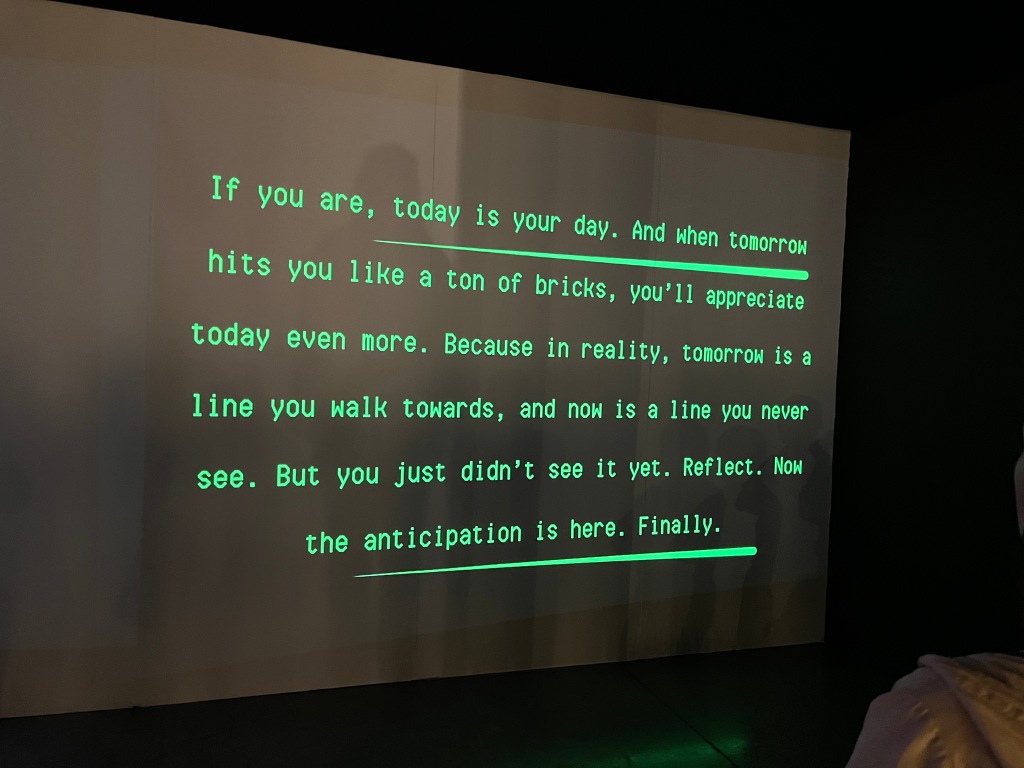
The art fair impresses with its span of geographical coverage and the variety of mediums in art form. Being a tech hub second only to Silicon Valley, there are artworks that center around technology, processes, and materials. Who would imagine the light in a painting could really come from light (LED)? I guess collectors now need not only to worry about picture rails but also about power outlets high on the wall.
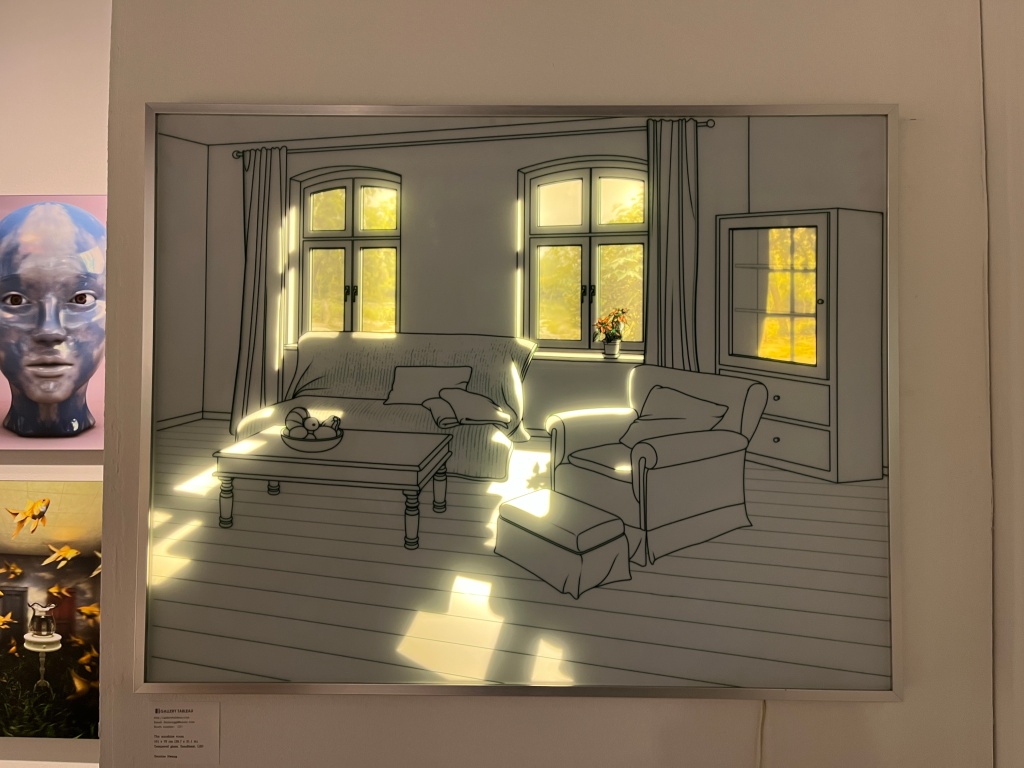
The international gallery rosters include Argentina, Mexico, Spain, Italy, Japan, Korea, India, and even Iran. The Iranian gallery features detailed paintings with natural colors on handmade boxes or within exquisite inlaid frames. Collectors certainly noticed. At the time of my visit, they were so busy with sales that I did not have a chance to ask about the process.
They were not alone. We spotted many sales through our short visit. The variety in prices ensured that there is something for almost everyone. Rows of handmade ceramics donuts by Catherine McMillan offered from J. Rinehart Gallery showed that $650 for a donut topped with Lucky Charms is too delicious to pass, even if you wouldn’t dare to bite. If that is a price tag too high, how about a $50 custom t-shirt designed by the gallery artists? If that is still not a bargain, what about a free tattoo? The caveat of a free tattoo is that you don’t know the design until it is done!
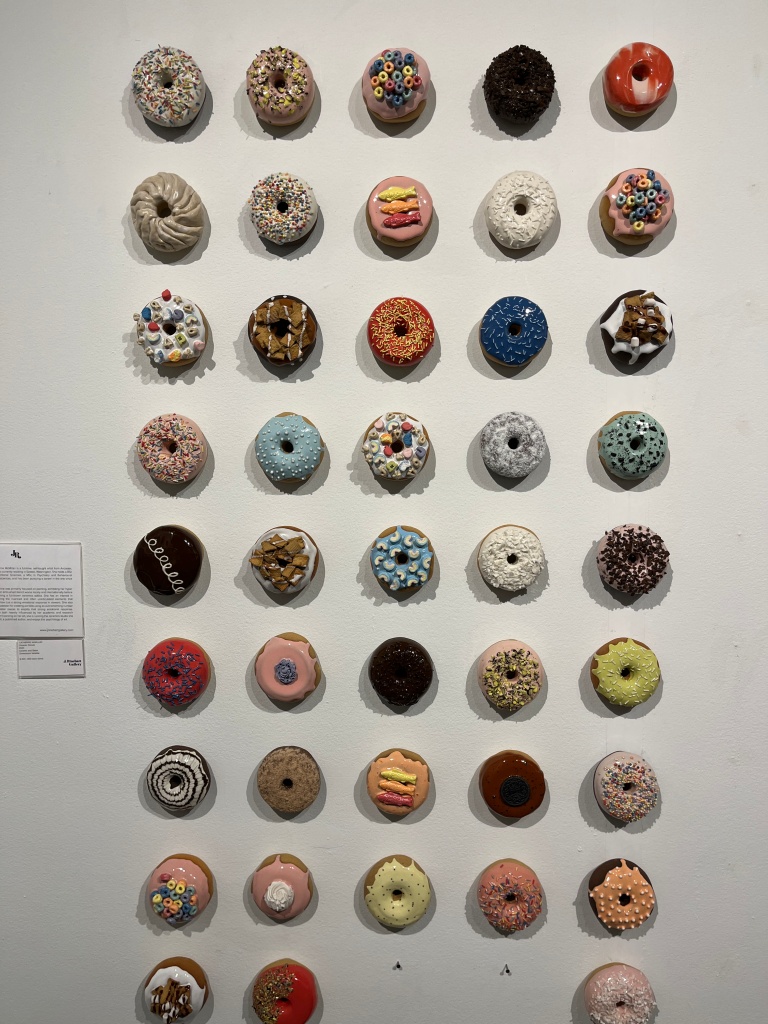
On the other end of the price echelon, I was impressed by Humaira Abid’s carved wood shirt from Greg Kucera Gallery. Carving with pine wood, Abid is able to express the softness of the fabric, the machinery precision of a zipper, and the intricacy of laces. Once the sensation of cognitive familiarity from an unthinkable medium resides, I was pulled into it more and more to examine both the execution excellence and its meaning beyond the process and material: In Abid, the tenderness of an everyday object finds its timelessness through an alien material. The same gallery also represents Deborah Butterfield, with a tag “price upon request.” Should we interpret it as “If you ask, you can’t afford it?”
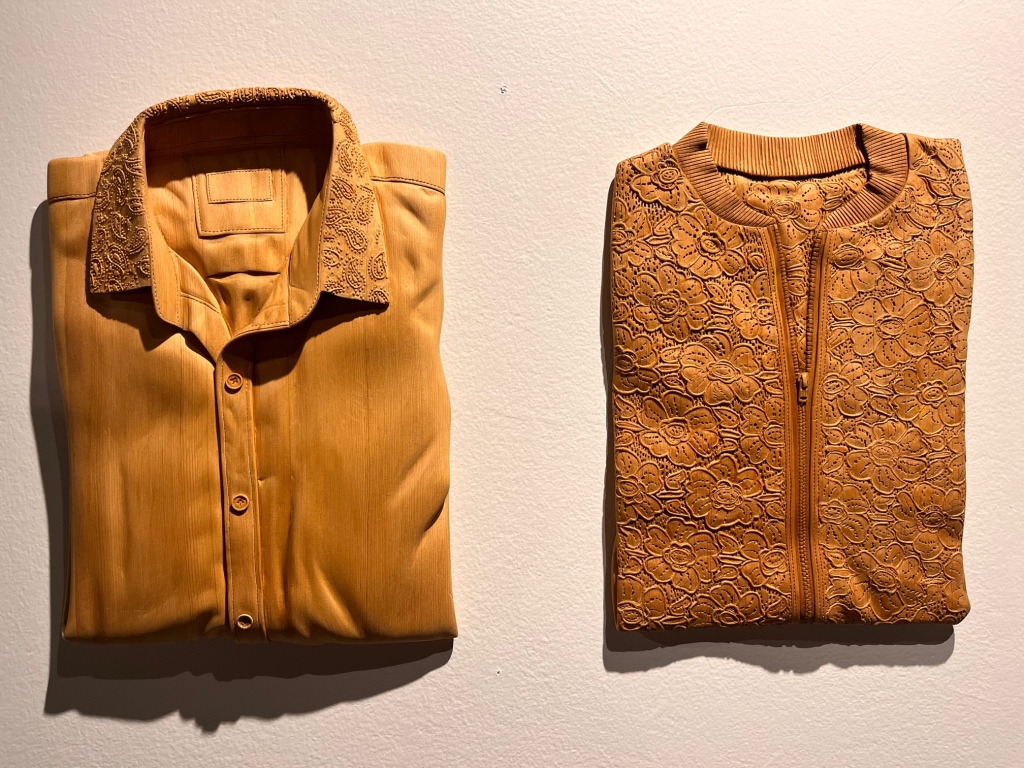
The variety also comes from complementing secondary-market artworks of historical significance with contemporary artworks. Chicago gallery Fledermaus presented art nouveau prints with contemporary re-interpretations. From Woodside/Braseth Gallery, we were able to see work by regional staples including William Cumming, an outspoken 20th Century artist affiliated with the Northwest School. I was happy to see in person a few large collage works by Japanese American Artist Paul Horiuchi. The nuance in texture from rice paper, prints, and other painting materials would have been lost on a computer screen.
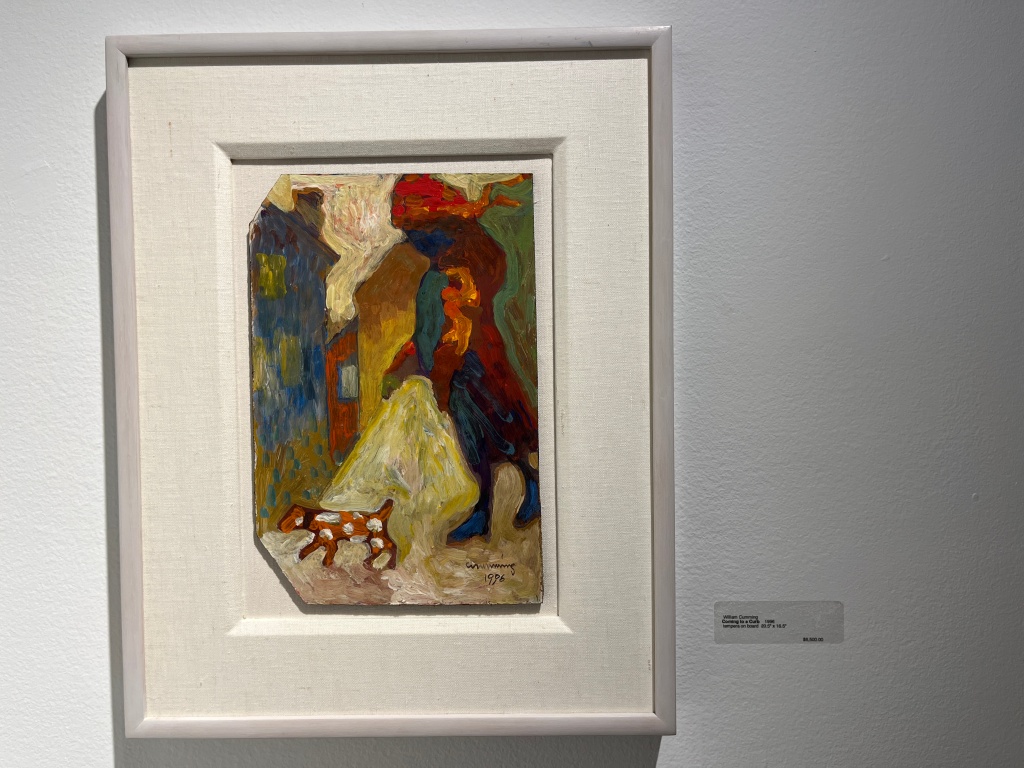
Our unconscious bias brought our attention to many Portland galleries. Not only was Blue Sky Photography one of the cultural partners, but so were several galleries on the main floor, including Portland staple Russo Lee and Antler Gallery, which specializes in hyper-realistic and surrealistic works. When we told Susannah, the co-owner of Antler that we just enjoyed their opening of “Pizza in the Rain” the previous night in Portland, she laughed and said she just drove in that morning as well.
We had a conversation and learned about Mullowney Printing Company. They specialize in artist prints, collaborate with artists editioning, and offer all printmaking assistance from lithographs, etching, and monotypes. It was great to make the connection and get to know another Portland art establishment through the fair.
The purpose of making connections with local patrons probably explains why Seattle’s local galleries supported the fair in full force. Before the experience, we did not even know there were so many Seattle-based galleries. They have the advantage of following-up with patrons and potential customers with on-site visits and extending the little conversations or one-time transactions into a long-lasting relationships.
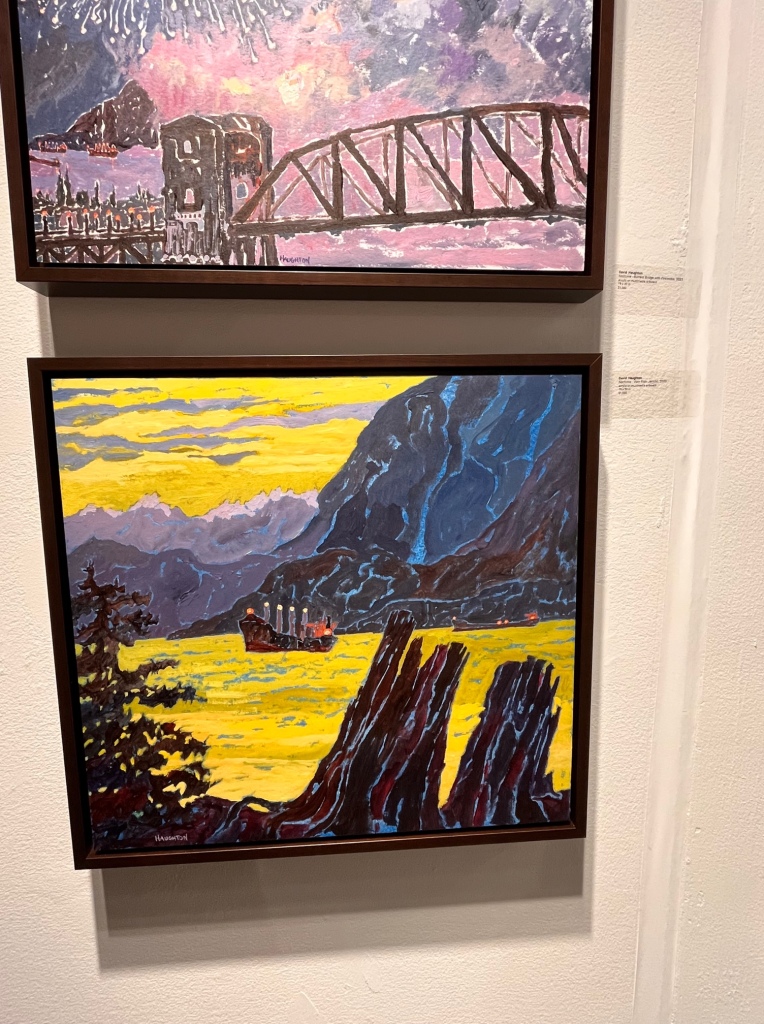
The quality of local galleries’ offerings is equally impressive. A few years ago prior to the pandemic, we visited Gallery 110 and chatted with Vancouver artist David Haughton, who showed a series of disturbing paintings in Angry White Men. At that time, the artist told me, in addition to the fact that it took longer and longer to drive between Seattle and Vancouver, his main oeuvre is landscape. At the fair, I fell in love with his work “Nocturn – View from Jericho.” It was hard to imagine depicting the natural beauty of PNW in anything other than the subtlety of green, but Haughton, with his strong palette of yellow, navy, and purple, portrays a convincing river scene in its imagined glory. The silhouette of rocks and mountains, magically highlighted in complementary bright blue hue, sparkle in the evening glow.
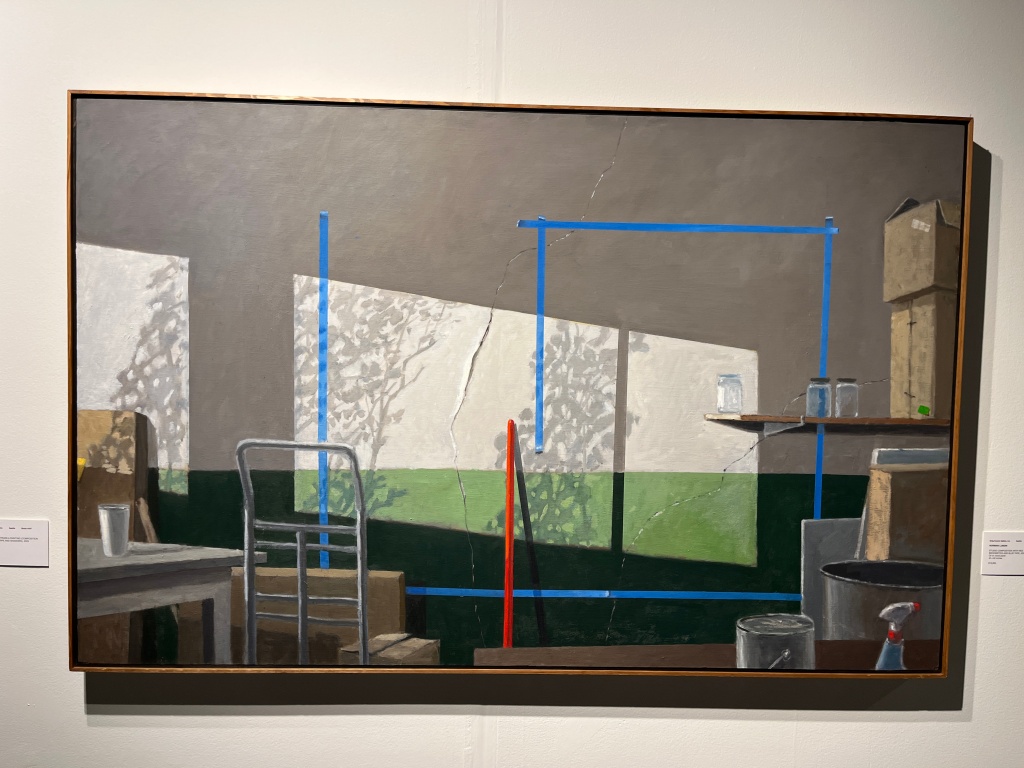
It was at Greg Kucera Gallery where I kept coming back. Norman Lundin’s studio composition is a homage to Mondrian, with a twist of trompe l’oeil It is a visual wonder to be fooled between the softness of cast shadow from the glass bottles on a window sill and the hard edges of the blue tape against the wall. The suffused light is quintessential Pacific Northwest.
In a few months, I will miss that light.
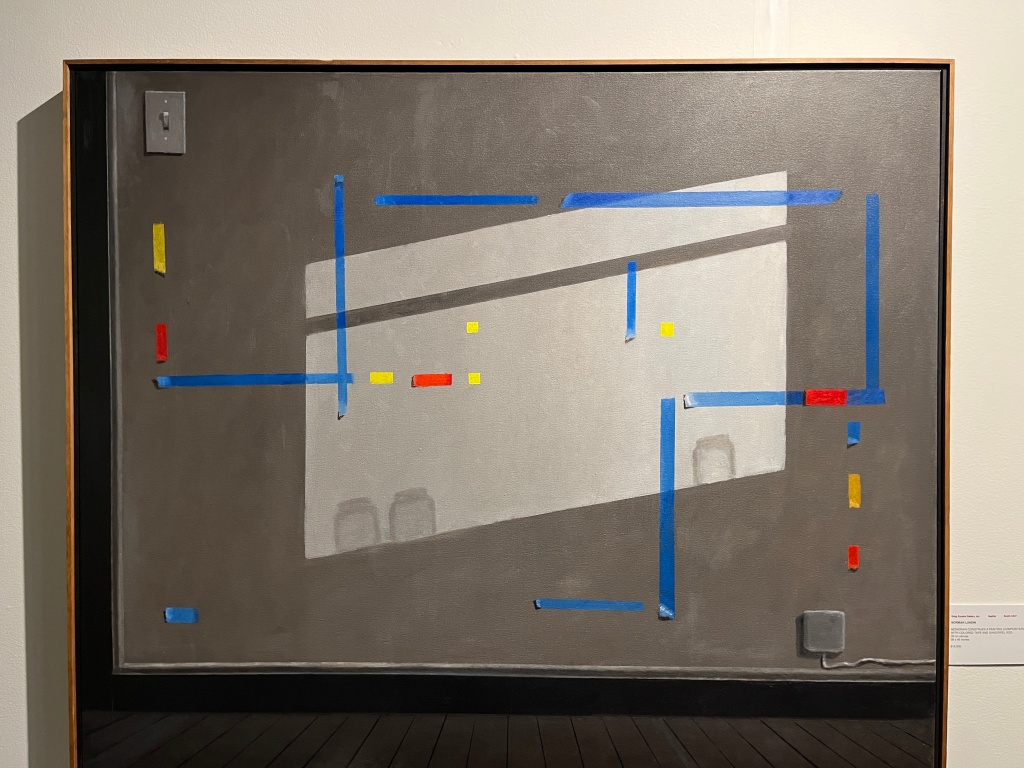
Discover more from Urban Art & Antiques
Subscribe to get the latest posts sent to your email.

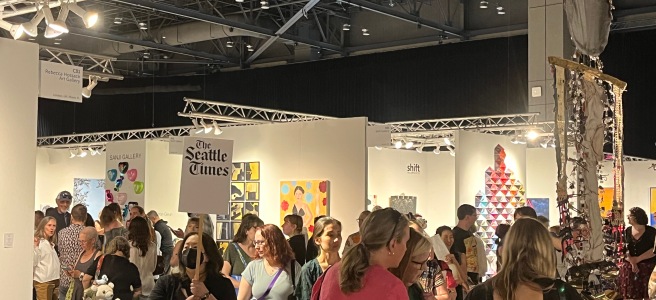

One thought on “The PNW’s Art Destination”